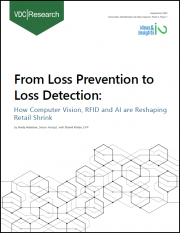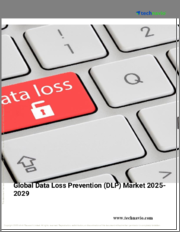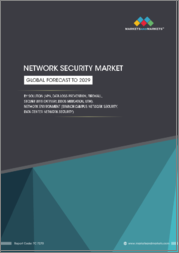
|
시장보고서
상품코드
1702220
데이터 유출 방지 시장 규모, 점유율, 동향, 예측 : 유형, 서비스, 규모, 전개 방식, 용도, 지역별(2025-2033년)Data Loss Prevention Market Size, Share, Trends and Forecast by Type, Services, Size, Deployment Type, Application, and Region, 2025-2033 |
||||||
데이터 유출 방지 세계 시장 규모는 2024년에 25억 8,000만 달러에 달했습니다. 향후 IMARC Group은 2033년까지 122억 9,000만 달러에 달할 것으로 예상하며, 2025년부터 2033년까지 18.9%의 CAGR을 기록할 것으로 예측하고 있습니다. 현재 북미가 시장을 독점하고 있으며, 2024년에는 29.8% 이상의 큰 시장 점유율을 차지했습니다. 데이터 안전 및 보호, 법규 준수에 대한 기업의 관심이 높아지고, 원격 클라우드 시스템에서 데이터와 모바일 인력을 보호하기 위한 DLP 소프트웨어의 채택이 증가하면서 데이터 유출 방지 시장의 수요를 촉진하고 있습니다. 현재 북미가 가장 큰 시장 점유율을 차지하고 있는데, 이는 엄격한 데이터 프라이버시 규제와 선진적인 사이버 보안 생태계에 기인합니다.
데이터 유출 방지(DLP)는 기밀 데이터의 누출, 유출, 무단 액세스를 탐지하고 방지하기 위해 사용되는 일련의 도구와 프로세스를 말합니다. 규제 대상 데이터, 기밀 데이터, 비즈니스 크리티컬 데이터를 분류하고, 엔드포인트 활동을 모니터링 및 제어하며, 기업 네트워크의 데이터 스트림을 필터링하고, 클라우드의 데이터를 규제합니다. 또한, 컴플라이언스 및 감사 요건을 충족하고, 포렌식 및 사고 대응을 위해 취약점 및 이상 징후를 식별하는 데 도움이 됩니다. 그 결과, 오늘날 기업들은 DLP에 의존하여 데이터를 보호하고, 보안을 유지하며, 관련 규정을 준수하고 있습니다.
데이터 유출 방지 시장 동향:
비즈니스 프로세스의 급속한 디지털화로 인해 다양한 산업에서 사업을 영위하는 조직이 사이버 공격에 노출되기 쉬워지고 있습니다. 이러한 사이버 공격은 기밀 데이터의 악용과 막대한 재정적 손실로 이어질 수 있기 때문에 불법적인 데이터 유출 및 전송을 방어하는 DLP 소프트웨어의 도입이 증가하고 있습니다. 이와는 별개로, 데이터 가시성을 확보하고 개인 식별 정보(PII)를 보호하며 BYOD(Bring Your Own Device) 환경에서 보안을 강화하기 위해 중소기업(SME)에서 널리 활용되고 있습니다. 또한, 코로나 바이러스 감염증(COVID-19)의 유행으로 인해 많은 국가의 정부 기관이 봉쇄 조치를 취했습니다. 그 결과, 일부 기업들은 원격 근무 모델과 DLP 소프트웨어로 전환하여 모바일 인력과 원격 클라우드 시스템의 데이터를 보호하고 있습니다. 이와 더불어 병원이 방대한 양의 개인 데이터, 의료 데이터, 연구 개발(R&D), 지적 재산(IP)을 수집하고 저장하고 있기 때문에 DLP는 보호된 의료 정보(PHI)를 보호하기 위해 헬스케어 분야에서 지지를 받고 있습니다. 또한, 온라인 뱅킹 서비스 이용이 증가함에 따라 은행, 금융 서비스 및 보험(BFSI) 부문에서는 결제 카드 정보 및 고객의 기밀 데이터를 보호하기 위해 DLP에 대한 수요가 증가하고 있습니다.
본 보고서에서 다루는 주요 질문
- 데이터 유출 방지란 무엇인가?
- 전 세계 데이터 유출 방지 시장의 시장 규모는?
- 2025-2033년 세계 데이터 유출 방지 시장의 예상 성장률은?
- 데이터 유출 방지 시장 세계 시장을 주도하는 주요 요인은 무엇인가?
- 데이터 유출 방지 시장 유형별 세계 주요 부문은?
- 데이터 유출 방지 시장의 세계 주요 부문은 규모별로 어떻게 나뉘는가?
- 전개 방식에 따른 데이터 유출 방지 시장의 세계 주요 부문은?
- 산업별 데이터 유출 방지 시장의 세계 주요 부문은?
- 데이터 유출 방지 시장의 세계 주요 부문은 용도별로 어떻게 나뉘는가?
- 전 세계 데이터 유출 방지 시장의 주요 지역은?
- 세계 데이터 유출 방지 시장의 주요 플레이어/기업은?
목차
제1장 서문
제2장 조사 범위와 조사 방법
- 조사 목적
- 이해관계자
- 데이터 소스
- 1차 정보
- 2차 정보
- 시장 추정
- 상향식 접근
- 하향식 접근
- 조사 방법
제3장 주요 요약
제4장 소개
- 개요
- 주요 업계 동향
제5장 세계의 데이터 유출 방지 시장
- 시장 개요
- 시장 실적
- COVID-19의 영향
- 시장 예측
제6장 시장 내역 : 유형별
- 데이터센터 DLP
- 엔드포인트 DLP
- 네트워크 DLP
제7장 시장 내역 : 서비스별
- 매니지드 보안 서비스
- 연수와 교육
- 컨설팅
- 시스템 통합과 인스톨
- 위협과 리스크 평가
제8장 시장 내역 : 사이즈별
- 대기업
- 중소기업
제9장 시장 내역 : 전개 방식별
- 온프레미스
- 클라우드 데이터 손실 보호
제10장 시장 내역 : 용도별
- 클라우드 스토리지
- 암호화
- 폴리시 기준과 절차
- 웹 및 메일 보호
- 기타
제11장 시장 내역 : 산업별
- 헬스케어
- 소매·물류
- 방위와 정보
- 유틸리티 및 정부기관
- BFSI
- IT 및 통신
- 기타
제12장 시장 내역 : 지역별
- 북미
- 미국
- 캐나다
- 아시아태평양
- 중국
- 일본
- 인도
- 한국
- 호주
- 인도네시아
- 기타
- 유럽
- 독일
- 프랑스
- 영국
- 이탈리아
- 스페인
- 러시아
- 기타
- 라틴아메리카
- 브라질
- 멕시코
- 기타
- 중동 및 아프리카
- 시장 내역 : 국가별
제13장 SWOT 분석
- 개요
- 강점
- 약점
- 기회
- 위협
제14장 밸류체인 분석
제15장 Porter's Five Forces 분석
- 개요
- 구매자의 교섭력
- 공급 기업의 교섭력
- 경쟁 정도
- 신규 참여업체의 위협
- 대체품의 위협
제16장 가격 분석
제17장 경쟁 구도
- 시장 구조
- 주요 기업
- 주요 기업 개요
- Absolute Software Corporation
- Broadcom Inc.
- Cisco Systems Inc.
- Digital Guardian(HelpSystems LLC)
- Forcepoint
- Gtb Technologies Inc.
- McAfee Corp.
- Proofpoint Inc.
- Thales Group
- Trend Micro Inc.
- Trustwave Holdings(Singapore Telecommunications Limited)
- Zecurion
The global data loss prevention market size was valued at USD 2.58 Billion in 2024. Looking forward, IMARC Group estimates the market to reach USD 12.29 Billion by 2033, exhibiting a CAGR of 18.9% during 2025-2033. North America currently dominates the market, holding a significant market share of over 29.8% in 2024. The growing focus of organizations on securing and protecting their data and complying with regulations, coupled with the rising adoption of DLP software to secure data and mobile workforce on remote cloud systems, is propelling the data loss prevention market demand. At present, North America holds the largest market share, driven by stringent data privacy regulations and advanced cybersecurity ecosystem.
Data loss prevention (DLP) refers to a set of tools and processes used to detect and prevent data breaches, exfiltration, or unauthorized access of sensitive data. It classifies regulated, confidential, and business-critical data; monitors and controls endpoint activities; filters data streams on corporate networks; and regulates data in the cloud. It also helps meet compliance and auditing requirements and identify areas of weakness and anomalies for forensics and incident response. As a result, organizations nowadays are relying on DLP to protect and secure their data and comply with relevant regulations.
Data Loss Prevention Market Trends:
Due to the rapid digitalization of business processes, organizations operating in different industry verticals have become vulnerable to cyberattacks. As these cyberattacks can lead to misuse of confidential data and a huge financial loss, there is a rise in the adoption of DLP software to help organizations defend against illicit data leakage and transfer. Apart from this, it is widely utilized by small and medium-sized enterprises (SMEs) to achieve data visibility, protect personally identifiable information (PII), and enforce security in Bring Your Own Device (BYOD) environments. Moreover, due to the coronavirus disease (COVID-19) outbreak, governing agencies of numerous countries have implemented lockdowns. Consequently, several companies have shifted to remote working models and DLP software to secure mobile workforce and data on remote cloud systems. Besides this, as hospitals collect and store incredible amounts of personal and medical data, research and development (R&D), and intellectual property (IP), DLP is gaining traction in the healthcare sector to safeguard protected health information (PHI). Furthermore, the increasing usage of online banking services is driving the demand for DLP in the banking, financial services, and insurance (BFSI) sector to protect payment card information and customers' sensitive data.
Key Market Segmentation:
Breakup by Type:
- Data Center DLP
- Endpoint DLP
- Network DLP
Breakup by Services:
- Managed Security Services
- Training and Education
- Consulting
- System Integration and Installation
- Threat and Risk Assessment
Breakup by Size:
- Large Enterprises
- Small and Medium-sized Enterprises
Breakup by Deployment Type:
- On-premises
- Cloud Data Loss Protection
Breakup by Application:
- Cloud Storage
- Encryption
- Policy Standards and Procedures
- Web and Email Protection
- Others
Breakup by Industry:
- Healthcare
- Retail and Logistics
- Defense and Intelligence
- Public Utilities and Government Bodies
- BFSI
- IT and Telecom
- Others
Breakup by Region:
- North America
- United States
- Canada
- Asia-Pacific
- China
- Japan
- India
- South Korea
- Australia
- Indonesia
- Others
- Europe
- Germany
- France
- United Kingdom
- Italy
- Spain
- Russia
- Others
- Latin America
- Brazil
- Mexico
- Others
- Middle East and Africa
Competitive Landscape:
The competitive landscape of the industry has also been examined along with the profiles of the key players being Absolute Software Corporation, Broadcom Inc., Cisco Systems Inc., Digital Guardian (HelpSystems LLC), Forcepoint, Gtb Technologies Inc., McAfee Corp., Proofpoint Inc., Thales Group, Trend Micro Inc., Trustwave Holdings (Singapore Telecommunications Limited) and Zecurion.
Key Questions Answered in This Report
- 1.What is data loss prevention?
- 2.How big is the global data loss prevention market?
- 3.What is the expected growth rate of the global data loss prevention market during 2025-2033?
- 4.What are the key factors driving the global data loss prevention market?
- 5.What is the leading segment of the global data loss prevention market based on type?
- 6.What is the leading segment of the global data loss prevention market based on size?
- 7.What is the leading segment of the global data loss prevention market based on deployment type?
- 8.What is the leading segment of the global data loss prevention market based on industry?
- 9.What is the leading segment of the global data loss prevention market based on application?
- 10.What are the key regions in the global data loss prevention market?
- 11.Who are the key players/companies in the global data loss prevention market?
Table of Contents
1 Preface
2 Scope and Methodology
- 2.1 Objectives of the Study
- 2.2 Stakeholders
- 2.3 Data Sources
- 2.3.1 Primary Sources
- 2.3.2 Secondary Sources
- 2.4 Market Estimation
- 2.4.1 Bottom-Up Approach
- 2.4.2 Top-Down Approach
- 2.5 Forecasting Methodology
3 Executive Summary
4 Introduction
- 4.1 Overview
- 4.2 Key Industry Trends
5 Global Data Loss Prevention Market
- 5.1 Market Overview
- 5.2 Market Performance
- 5.3 Impact of COVID-19
- 5.4 Market Forecast
6 Market Breakup by Type
- 6.1 Data Center DLP
- 6.1.1 Market Trends
- 6.1.2 Market Forecast
- 6.2 Endpoint DLP
- 6.2.1 Market Trends
- 6.2.2 Market Forecast
- 6.3 Network DLP
- 6.3.1 Market Trends
- 6.3.2 Market Forecast
7 Market Breakup by Services
- 7.1 Managed Security Services
- 7.1.1 Market Trends
- 7.1.2 Market Forecast
- 7.2 Training and Education
- 7.2.1 Market Trends
- 7.2.2 Market Forecast
- 7.3 Consulting
- 7.3.1 Market Trends
- 7.3.2 Market Forecast
- 7.4 System Integration and Installation
- 7.4.1 Market Trends
- 7.4.2 Market Forecast
- 7.5 Threat and Risk Assessment
- 7.5.1 Market Trends
- 7.5.2 Market Forecast
8 Market Breakup by Size
- 8.1 Large Enterprises
- 8.1.1 Market Trends
- 8.1.2 Market Forecast
- 8.2 Small and Medium-sized Enterprises
- 8.2.1 Market Trends
- 8.2.2 Market Forecast
9 Market Breakup by Deployment Type
- 9.1 On-premises
- 9.1.1 Market Trends
- 9.1.2 Market Forecast
- 9.2 Cloud Data Loss Protection
- 9.2.1 Market Trends
- 9.2.2 Market Forecast
10 Market Breakup by Application
- 10.1 Cloud Storage
- 10.1.1 Market Trends
- 10.1.2 Market Forecast
- 10.2 Encryption
- 10.2.1 Market Trends
- 10.2.2 Market Forecast
- 10.3 Policy Standards and Procedures
- 10.3.1 Market Trends
- 10.3.2 Market Forecast
- 10.4 Web and Email Protection
- 10.4.1 Market Trends
- 10.4.2 Market Forecast
- 10.5 Others
- 10.5.1 Market Trends
- 10.5.2 Market Forecast
11 Market Breakup by Industry
- 11.1 Healthcare
- 11.1.1 Market Trends
- 11.1.2 Market Forecast
- 11.2 Retail and Logistics
- 11.2.1 Market Trends
- 11.2.2 Market Forecast
- 11.3 Defense and Intelligence
- 11.3.1 Market Trends
- 11.3.2 Market Forecast
- 11.4 Public Utilities and Government Bodies
- 11.4.1 Market Trends
- 11.4.2 Market Forecast
- 11.5 BFSI
- 11.5.1 Market Trends
- 11.5.2 Market Forecast
- 11.6 IT and Telecom
- 11.6.1 Market Trends
- 11.6.2 Market Forecast
- 11.7 Others
- 11.7.1 Market Trends
- 11.7.2 Market Forecast
12 Market Breakup by Region
- 12.1 North America
- 12.1.1 United States
- 12.1.1.1 Market Trends
- 12.1.1.2 Market Forecast
- 12.1.2 Canada
- 12.1.2.1 Market Trends
- 12.1.2.2 Market Forecast
- 12.1.1 United States
- 12.2 Asia-Pacific
- 12.2.1 China
- 12.2.1.1 Market Trends
- 12.2.1.2 Market Forecast
- 12.2.2 Japan
- 12.2.2.1 Market Trends
- 12.2.2.2 Market Forecast
- 12.2.3 India
- 12.2.3.1 Market Trends
- 12.2.3.2 Market Forecast
- 12.2.4 South Korea
- 12.2.4.1 Market Trends
- 12.2.4.2 Market Forecast
- 12.2.5 Australia
- 12.2.5.1 Market Trends
- 12.2.5.2 Market Forecast
- 12.2.6 Indonesia
- 12.2.6.1 Market Trends
- 12.2.6.2 Market Forecast
- 12.2.7 Others
- 12.2.7.1 Market Trends
- 12.2.7.2 Market Forecast
- 12.2.1 China
- 12.3 Europe
- 12.3.1 Germany
- 12.3.1.1 Market Trends
- 12.3.1.2 Market Forecast
- 12.3.2 France
- 12.3.2.1 Market Trends
- 12.3.2.2 Market Forecast
- 12.3.3 United Kingdom
- 12.3.3.1 Market Trends
- 12.3.3.2 Market Forecast
- 12.3.4 Italy
- 12.3.4.1 Market Trends
- 12.3.4.2 Market Forecast
- 12.3.5 Spain
- 12.3.5.1 Market Trends
- 12.3.5.2 Market Forecast
- 12.3.6 Russia
- 12.3.6.1 Market Trends
- 12.3.6.2 Market Forecast
- 12.3.7 Others
- 12.3.7.1 Market Trends
- 12.3.7.2 Market Forecast
- 12.3.1 Germany
- 12.4 Latin America
- 12.4.1 Brazil
- 12.4.1.1 Market Trends
- 12.4.1.2 Market Forecast
- 12.4.2 Mexico
- 12.4.2.1 Market Trends
- 12.4.2.2 Market Forecast
- 12.4.3 Others
- 12.4.3.1 Market Trends
- 12.4.3.2 Market Forecast
- 12.4.1 Brazil
- 12.5 Middle East and Africa
- 12.5.1 Market Trends
- 12.5.2 Market Breakup by Country
- 12.5.3 Market Forecast
13 SWOT Analysis
- 13.1 Overview
- 13.2 Strengths
- 13.3 Weaknesses
- 13.4 Opportunities
- 13.5 Threats
14 Value Chain Analysis
15 Porters Five Forces Analysis
- 15.1 Overview
- 15.2 Bargaining Power of Buyers
- 15.3 Bargaining Power of Suppliers
- 15.4 Degree of Competition
- 15.5 Threat of New Entrants
- 15.6 Threat of Substitutes
16 Price Analysis
17 Competitive Landscape
- 17.1 Market Structure
- 17.2 Key Players
- 17.3 Profiles of Key Players
- 17.3.1 Absolute Software Corporation
- 17.3.1.1 Company Overview
- 17.3.1.2 Product Portfolio
- 17.3.1.3 Financials
- 17.3.2 Broadcom Inc.
- 17.3.2.1 Company Overview
- 17.3.2.2 Product Portfolio
- 17.3.2.3 Financials
- 17.3.2.4 SWOT Analysis
- 17.3.3 Cisco Systems Inc.
- 17.3.3.1 Company Overview
- 17.3.3.2 Product Portfolio
- 17.3.3.3 Financials
- 17.3.3.4 SWOT Analysis
- 17.3.4 Digital Guardian (HelpSystems LLC)
- 17.3.4.1 Company Overview
- 17.3.4.2 Product Portfolio
- 17.3.5 Forcepoint
- 17.3.5.1 Company Overview
- 17.3.5.2 Product Portfolio
- 17.3.6 Gtb Technologies Inc.
- 17.3.6.1 Company Overview
- 17.3.6.2 Product Portfolio
- 17.3.7 McAfee Corp.
- 17.3.7.1 Company Overview
- 17.3.7.2 Product Portfolio
- 17.3.7.3 Financials
- 17.3.8 Proofpoint Inc.
- 17.3.8.1 Company Overview
- 17.3.8.2 Product Portfolio
- 17.3.9 Thales Group
- 17.3.9.1 Company Overview
- 17.3.9.2 Product Portfolio
- 17.3.9.3 Financials
- 17.3.9.4 SWOT Analysis
- 17.3.10 Trend Micro Inc.
- 17.3.10.1 Company Overview
- 17.3.10.2 Product Portfolio
- 17.3.10.3 Financials
- 17.3.10.4 SWOT Analysis
- 17.3.11 Trustwave Holdings (Singapore Telecommunications Limited)
- 17.3.11.1 Company Overview
- 17.3.11.2 Product Portfolio
- 17.3.12 Zecurion
- 17.3.12.1 Company Overview
- 17.3.12.2 Product Portfolio
- 17.3.1 Absolute Software Corporation



















